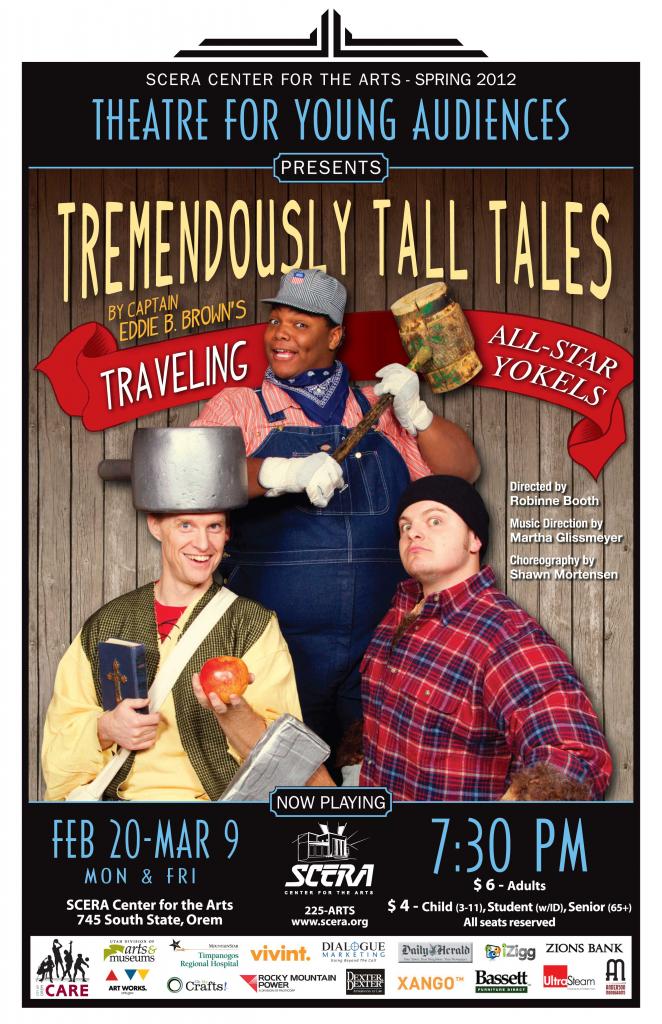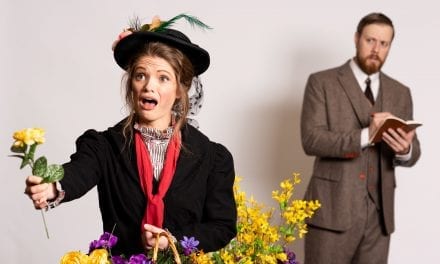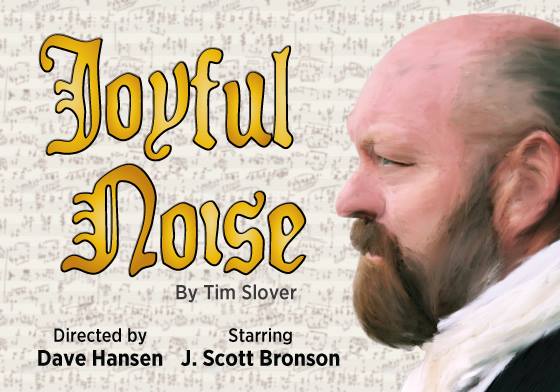 OREM — Tremendously Tall Tales (directed by Robinne Booth) is a show designed for young audiences. It runs about an hour without an intermission, and tells the tall tales of Paul Bunyan, John Henry, and Johnny Appleseed.
OREM — Tremendously Tall Tales (directed by Robinne Booth) is a show designed for young audiences. It runs about an hour without an intermission, and tells the tall tales of Paul Bunyan, John Henry, and Johnny Appleseed.
My first reaction to this piece was confusion; I wasn’t sure what was going on. The play opens with a song, and although all the performers had microphones, I could not understand what they were saying, and therefore missed important information.
Apparently the premise of the piece is that a group called Captain Eddie B. Brown’s Traveling All-Star Yokels is performing tall tales; the actors in the troupe were playing actors playing tall tale characters. The audience was watching the tall tale performances, as well as the Yokels interactions outside the tall tale stories. I didn’t know that until about half-way through the show, so conversations between the actors about whether or not they were allowed to improvise, dropped lines and characters, and arguments between actors looked like mistakes rather then intentional decisions.
Some of this confusion may have been due to the the dialogue (playwright Patty Lynch.) It was difficult to tell how much was scripted and how much was improvised, but if it was all scripted there was a lot of dialogue that made the story and characters unclear. There were arguments where everyone was yelling over each other which served no purpose and added to the sense of confusion.
Even after I figured out that we were watching an acting troupe tell stories, I still didn’t understand why a lot of things were happening. Because this was a piece for children, the cast relied on a lot of physical humor that had nothing to do with the story they were telling; it was more confusing then funny. During the Johnny Appleseed story, Johnny (Eric Johnson) sings a song called “Seeds” (music by Victor Zupanc) about his dream of filling the west with apple trees. It was a fun song and Eric sang it well. It gave information about Johnny Appleseed, which, considering the title of the piece, I assumed was the point of the show. As I was enjoying it, though, his wolf companion (Alec Powell) and an Indian warrior (Danielle Berry) were dancing (with choreography by Shawn Mortensen). They didn’t keep to the tempo of the song, nor did they maintain any particular dance style. They went from dancing as partners to doing random ballet positions. It distracted from what Johnny was singing about, and added nothing to the plot. It seemed to be there just to be funny, to try to keep the children’s attention.
Another instance of distracting humor was during the Paul Bunyan story. It started with Paul Bunyon (Peter Sessions) as a baby, to show he was born with “an axe in his hand.” But instead of moving on to what Paul Bunyon is actually known for, they spend a good seven minutes on him belching and running around with a dirty diaper. It didn’t advance the plot or give any kind of information; it just played into children’s enjoyment of bathroom humor. The humor throughout the show was like this; it distracted from what was happening. Boothe and the cast relied on bathroom humor and physical comedy to get laughs instead of using the content of the piece to create humor. In doing so I was left asking the question, “What is this show trying to do?” Is it trying to tell tall tales or is it trying to keep kids entertained for an hour by any means necessary?
The set (designed by Morgan Barksdale and Joel Farnsworth) was mostly backdrops and blocks that become trees, water, mountains, etc. In general, the set worked very well. One of my favorite moments was, during the Paul Bunyan story, when Paul throws a pile of hard biscuits and they hit the ground so hard the Rocky Mountains appear. When the happened, the Rocky Mountains were dropped in at the back of the stage, which was a fun effect. But there were a few moments when I was confused by the director’s set choices. One such moment was during the John Henry story, when John Henry (Alec Powell) was competing with a steam drill to see who could drill through a mountain faster. A mountain was created out of blocks and as John Henry swung his hammers at it, blocks were removed to show his progress. But we only saw his progress, not the steam drill’s. There was a lot of yelling and noise during that scene, and since the audience couldn’t see who was winning or hear who was winning, it was anti-climactic. This was counter-productive, considering this was the high point of the John Henry story. I understand that it would have been difficult to bring a steam drill onstage, but if that couldn’t be done, then less chaos onstage would have allowed us as an audience to hear who was winning.
With all that being said, there were very fun moments in this piece, and some good performances from the actors. The music (under the guide of music director Martha Glissmeyer) was a lot of fun; I especially enjoyed the gospel music sung during the John Henry scene. I also enjoyed how the hammer was used in the John Henry vignette. Lil’ Gus (Eric Johnson) would drag the hammer across the stage, because it was too heavy for him to lift. Then John Henry would pick it up with one hand. Moments like this showed a precision and focus that were missing in the rest of the show. Another moment like that is when Johnny Appleseed is sleeping against a tree after being knocked out by the angel. She tries to wake him up and drags him to a sitting positions, which he holds for a few seconds, them slumps over with his mouth open. He did a wonderful job making being asleep look funny. That scene used what was happening to create humor rather then bringing in humor from outside.
Despite my concerns about this piece, most of the children in the audience seemed to really enjoy it. They were laughing and participating when the actors asked them to. So while I would not necessarily recommend this show to adults who wouldn’t have kids with them, children may well get a kick out of it.





